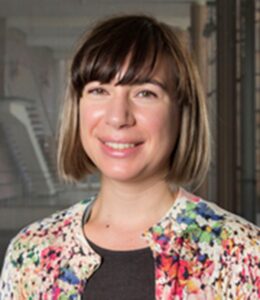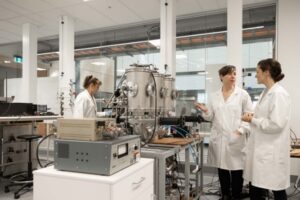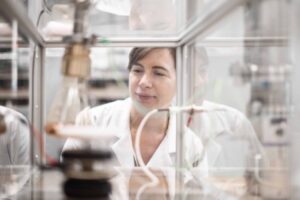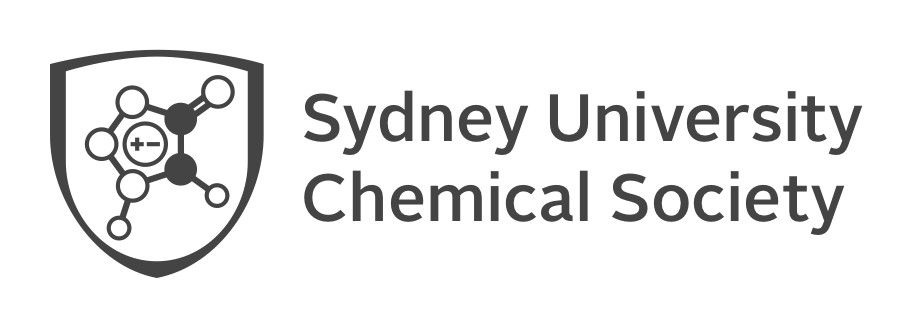Dr Shelley Wickham
Shelley is a Senior Lecturer in Chemistry and Physics. Her research focuses on DNA origami – a technology for building programmable DNA nanostructures with applications in cell biology, material science, and nanomedicine.

$3 million AUSMURI funding for 3D biomolecular nanomaterials
Our team in the DNA nanotechnology group are part of a large collaboration from three Australian universities who will share in up to $3 million funding from AUSMURI. This is a joint program of the US Department of Defense and Australia’s Department of Defence. Total funding for the project is up to $US8.5 million ($12.6 million). Our team is joining with other Australian and US researchers in a program led by Columbia University to invent and deliver responsive nanomaterials, exploring this new and rapidly developing area of fundamental science.


Dr Shelley Wickham and her collaborators Prof. Marcela Bilek and Dr Anna Waterhouse.
Our growing knowledge of the biological world at the nanoscale is opening up a new universe to explore the creation of completely new, responsive materials, with applications in diverse fields from drug delivery to materials science. Biological organisms have developed comprehensive molecular machinery for adapting and reconfiguring their states, for example to change shape or colour. Inspired by biology, we aim to build new material systems that can be reconfigured with nanoscale precision to achieve custom responsive optical and magnetic functions. These new materials could have incredibly useful roles to play in medical devices and drug delivery.
One of the most exciting parts of this project is the team, bringing together many different disciplines – chemistry, physics, material science, nanotechnology, medical science and engineering. Our group in the School of Chemistry will focus on using biomolecular self-assembly and ‘DNA origami’ to develop switchable nanomaterials with optical and magnetic functionality. We will work closely with Sydney University researchers Prof Marcela Bilek (ARC Laureate Fellow, School of Biomedical Engineering, the School of Physics, Sydney Nano and the Charles Perkins Centre) and Dr Anna Waterhouse (Robinson Fellow, School of Medical Sciences in the Faculty of Medicine and Health, Sydney Nano and the University’s Charles Perkins Centre). Their areas of the project will focus on the capacity for non-biological surfaces to act as biological scaffolds at the nanoscale.
Bringing this diverse group together will build a unique environment for advances in nanomaterials and create a great learning experience for students and early-career researchers on the team. The grant includes funding for higher degree students and research staff to conduct extended laboratory research in the United States. This will be an excellent experience at top-class global institutions for researchers starting out in their careers and allow them to bring back home a lot of this knowledge and expertise.
The AUSMURI team links five Australian and five US experts with complementary expertise in multidisciplinary material science. As well as the University of Sydney, which is the Australian-lead institute and Columbia in New York, the project involves academics from Johns Hopkins University, University of Michigan, University of Wisconsin-Madison in the US. It also involves Professor Amanda Ellis, Head of the School of Chemical and Biomedical Engineering at the University of Melbourne and Professor of Surface Engineering Peter Kingshott from the Department of Chemistry and Biotechnology at Swinburne University of Technology in Australia.
